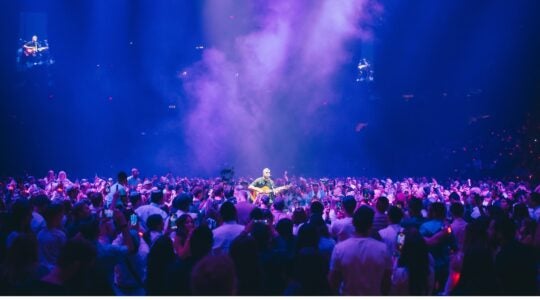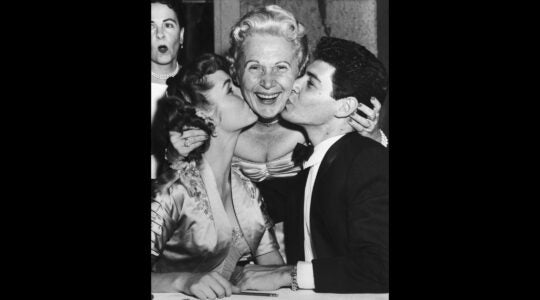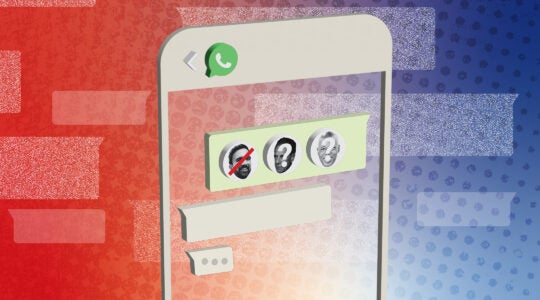Although his father was a Holocaust survivor, and he lived near many other survivors, Rabbi Sholom Friedmann grew up learning only the broad strokes of the Shoah.
A few decades later, as a teacher in Orthodox yeshivas in London, he realized that his young students knew little, beyond occasional stories they had heard about the Jewish experience in Nazi-occupied Europe, and that most of the available academic material on the subject paid little attention to what had happened to the Orthodox community.
Rabbi Friedmann decided to change that. He received training as a fellow in Holocaust education at London’s Imperial War Museum. Subsequently he served as director of the Zechor Yemos Olam Division of Torah Umesorah, where he designed curricula for Orthodox schools, before becoming director last year of the Kleinman Family Holocaust Education Center (kfhec.org), a museum and archives that is to open in Brooklyn’s heavily Orthodox Borough Park neighborhood later this year.
The center will be the first Orthodox-based Holocaust exhibition and education institution in this country.
The KFHEC website describes the center — established by philanthropist Elly Kleinman, president of The Americare Companies healthcare firm — as a community resource “inclusive of the orthodox Jewish experience. This will include an exposure to the historical events and hashkafic [worldview] lessons.”
The 21,000-square-foot, four-story center, which will include a permanent exhibit, extensive library for scholarly research, facilities for recording survivors’ testimonies, teacher’s training program and a café and bookstore, will focus on the Orthodox experience in the Shoah within the context of what happened to other victims of the Third Reich. But, Rabbi Friedmann adds, it’s not just an Orthodox institution.
“Most importantly,” he says, the center “will house unique Orthodox archival resources and collections from the Holocaust and displaced-persons period. These materials will be indispensible for understanding the Orthodox experience of the Holocaust.”
“The message” — how men and women of faith maintained their faith “despite the hell they were going through” — is “a message for everyone,” the rabbi says. “It is the inheritance of the Jewish people.”
Leaders in the Orthodox community have for years complained that prominent Holocaust centers like Yad Vashem, which shape much of the public’s knowledge of the wartime period, largely overlook the experience of religious Jews, who constituted an estimated 50 to 70 percent of the Nazis’ victims.
In response to such complaints, many Holocaust institutions, including Yad Vashem, have made a greater effort to include the Orthodox experience.
The Borough Park center will serve a greater need for young students than for members of local Orthodox families personally affected by the Holocaust, says Dr. Meir Wikler, an Orthodox psychologist in Borough Park and activist for Holocaust museums’ inclusion of the Orthodox experience.
“My sense is that people here will not be flocking to see it,” he says. “Most people here know all they ever want to from personal and familial experience. It will be important as an educational resource, however, for yeshivos and Bais Yaakovs [Orthodox girls’ schools]. As such, it will fill a gap that has existed for far too long.”
The new Borough Park center, which is not affiliated with any Orthodox institution, will have an annual budget of $10 million to $15 million, Rabbi Friedmann says. “It already maintains good working relationships with the U.S. Holocaust Memorial Museum — though a joint partnership survivor testimony project — the Museum of Tolerance of the Simon Wiesenthal Center in Manhattan and the Claims Conference. The KFHEC will abide by the American Association of Museums’ best practices and accreditation.”
Research materials will be available on prewar religious life in Europe, the role of anti-Semitism, spiritual resistance and self-sacrifice during the Holocaust, rabbinical responsa from that era, rescue efforts undertaken by Orthodox Jews outside of Europe and the Orthodox community’s postwar revival.
The center was designed by David Layman, who co-created the National September 11th Memorial & Museum in Lower Manhattan; Holocaust authority Michael Berenbaum is serving as “conceptual developer.”
It will seek the highest level of museum accreditation, Rabbi Friedmann says.
Survivors are donating artifacts to the center and offering it moral and financial support, he says.
When he was growing up, when the scars of the Shoah were still fresh, many survivors were reluctant to discuss their wartime experiences. ‘We’ve moved beyond that generation,” he says. “There is a palatable thirst for knowledge in the community and hence new questions are emerging about how Jews lived and died during this most difficult period.”
The New York Jewish Week brings you the stories behind the headlines, keeping you connected to Jewish life in New York. Help sustain the reporting you trust by donating today.




